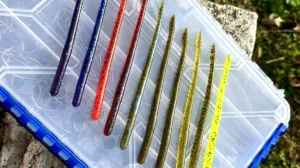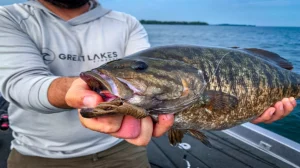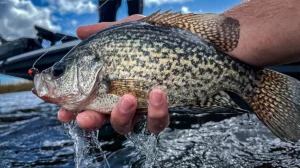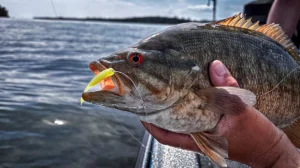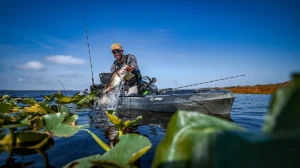“Finding the bass is half of the battle.”
It’s a popular expression uttered by thousands of bass anglers. Truth be told, it’s a fairly accurate statement throughout most seasons. But all bets are off when winter rears its ugly head. Most of the bass head to deep water this time of year and, while they tend to position in relatively predictable locations, getting these lethargic creatures to bite is often the most difficult part of the equation.
Shallow water “junk fishing”, however, is an effective solution to this coldwater conundrum. Instead of spending hours attempting to fool the deeper, more inactive bass in a fishery, this technique entails finding and taking advantage of smaller populations of more active bass.
Before you get started, there are several things to be aware of.
- Embrace the junk fishing mentality
- Pinpoint the warmest water
- Adjacent deep water is essential
- Effective techniques
What is junk fishing?
Simplicity is certainly a key factor when you’re coldwater junk fishing. To fully understand this technique, take a step back in time to your earliest days of bass fishing. When you first started experimenting with this sport, what was your plan of attack? If you’re anything like me, you probably walked the banks of local ponds and threw whatever you could think of at anything that looked “fishy”.
That’s basically the premise of junk fishing.
There are some strategic advantages to consider, which we’ll discuss shortly, but the whole idea is to cover water quickly and specifically target shallow bass despite the cold temperatures. It might sound crazy to go against conventional wisdom, but there’s a compelling argument for this method. The bass will be shallow for one reason— to feed. So although they may be fewer in numbers, they’ll likely be much easier to catch.
This strategy can be a viable option for many anglers, especially if you find yourself in one of the following categories.
- No electronics— Not everyone has the means to purchase electronics for their fishing boat and there’s nothing wrong with that. If you lack the equipment to efficiently locate deep wintertime bass, junk fishing can be an effective way to stay in the action. You may not get dozens of bites each outing, but you’re likely to come across a few sizeable bass while they’re feeding in the shallower, warmer waters.
- Shallow fishing is your strength— We all have different strengths and weaknesses but for whatever reason, fishing in deep water tends to intimidate many anglers. While you should always make an effort to improve your game, you’ll feel right at home with this technique. You can break out your favorite jigs, crankbaits and soft plastics and expect success, especially on sunny days.
- Bank anglers— Folks who fish from the bank often feel a bit disadvantaged this time of year. Can you blame ‘em? The majority of the bass are most likely hanging around deep structure and cover and bank anglers have limited ways to reach them. If you’re prepared to don your “walking shoes” and put in a little extra legwork, you’ll be able to walk the banks of your local fishery and put your baits in front of accessible, more active bass.
Find the warm water
Warm water is a relative term, especially in the winter months. It’s unlikely you’ll find water that’s tepid to the touch, but it’s important to understand that just a single degree or two can make a monumental difference in your success. This warmer water can attract three very important players— shad, crawfish and, most importantly, big bass.
- Shad— It’s not at all uncommon to find large populations of shallow baitfish in cold water, especially after a recent warm rain. The newly introduced runoff washes microorganisms into the fishery, which acts as a dinner bell for the shad.
- Crawfish— When the sun is beating down on a particular bank in the winter months, our crawfish friends become quite active. They’ll emerge from the cracks and crevices in rocky banks and begin their search for food. They’re not particularly renowned for their speed or agility and they represent a substantial meal for hungry bass, so they’re analogous to a filet mignon this time of the year.
So how do we find this warm water? It’s not as complicated as it may seem. Concentrate your efforts on sunny banks and specific cover that conducts and holds heat well.
- Gravel— If you’ve ever watched a cold weather fishing tournament on television, you’ve probably noticed gravel being a common denominator. These small, pea to golf ball-sized rocks warm quickly and hold heat for several hours afterward. This will slightly increase the surrounding water temperature and attract both forage and bass to the area.
- Chunk rock— If you can find long stretches of shallow riprap, such as causeways, you won’t be far from active bass. Not only do the corners of these bridges act as concentration points for shad throughout the entire year, but they also play host to hundreds—if not thousands—of crawfish in cold water conditions.
- Clay banks— Clay banks are largely ignored by bass anglers and it makes sense if you think about it. They just don’t look very sexy when compared many other banks. But they actually warm up quickly and hold head fairly well, which is why you hear about so many professional anglers targeting them in cold water. Bare clay banks can be surprisingly effective when fished with small, finesse crankbaits and nearby wood cover only sweetens the deal.
Adjacent deep water provides options
Although coldwater junk fishing is very effective, don’t think that the bass will be cruising the shallows throughout the entire day. This may be true in very specific situations but more than likely, they’re feeding for very short periods before becoming inactive. Remember, bass are very aware of their energy exertion right now, so they’re going to grab a quick bite to eat and get the heck out of dodge.
If you can find one of the aforementioned bottom compositions adjacent to deep water, however, you’ll drastically improve your chances of finding shallow, active bass.
- Security— Bass are some insecure little boogers, especially in the winter. They feel safest in deep water this time of the year, so they’re most likely to inhabit areas that offer them the perceived security of deep water. It’s kind of like one of us going to a bad side of town to grab a burger. The burger is good and worth the risk, but we’re not going to hang around long after we finish our meal.
- Smart energy utilization— Shallow water areas adorned with nearby deep water allow bass to expend their energy in an efficient manner. They’re not likely to travel great distances for a meal right now but they will, however, move vertically throughout the water column to take advantage of feeding opportunities. Adjacent deep water gives them the opportunity to slide up to the shallows to eat and quickly slide back out to the security of deep water.
So although we’re targeting shallow water, fishing in the backs of creeks probably isn’t the most efficient use of time. Instead, look for main river banks, main creek banks or channel swings.
Arm yourself for battle
Now that you’re able to recognize high-percentage areas for shallow water junk fishing this winter, you’re left with the fun part— catching them. While specificity and simplicity are most often preferred in bass fishing, this technique can be the polar opposite. Hence the name “junk fishing”. You’re likely to have all of your “junk” scattered about by the end of the day.
Before we get into bait and lure selection, let’s quickly touch on the importance of the aggravation factor. Even when you run across these shallow bass, they may not always be willing to choke on your offering within the first few casts— it’s just the nature of lethargic, wintertime bass behavior.
But when you run across key pieces of cover on which you’d expect a fish to position, repeated casts can force them to react instinctively. Before you assume there isn’t a fish on that awesome-looking blowdown, stump or dock, make several casts. It’s totally possible to irritate them into biting.
- Small crankbaits— Finesse crankbaits such as a Rapala Shad Rap or SPRO Little John can be outstanding choices for wintertime junk fishing. It’s largely a percentage game, so covering water quickly and efficiency is of the utmost importance. Make 45-degree casts in order to find the most productive strike zone and remember to keep your retrieve speed slow to cater to the bass’ apathetic nature.
- Shaky heads— They’re a staple in the winter months and the reason is simple. They catch fish when larger, bulkier presentations fall short. For an all-purpose approach, try a 3/16-ounce shaky head and a small finesse worm such as a Strike King KVD Perfect Plastic Finesse Worm. This combination can be easily fished in depths ranging from 1-foot to 30 feet, so you won’t have any problems maintaining bottom contact.
- Jigs— If you’re someone who likes to fish for a few big bites each day, jigs are perfect for your approach. It’s tempting to cast a lighter jig due to the lethargic bass behavior, but a 1/2-ounce model can be incredibly effective. When you pitch or flip it next to a piece of cover, its fast descent often surprises the bass and takes advantage of its predatory instincts.
- Bladed swim jigs— Often overlooked in the winter, these lures can work surprisingly well right now. Instead of a simple “cast and wind” method, make long, 45-degree angle casts to shallow banks and let it fall to the bottom. After engaging your reel, retrieve it just slow enough so you can barely feel the blade thumping back and forth. Your bites won’t be very noticeable— they’ll usually feel like a small twig on your line. So pay close attention to your line’s movements.
- Stick worms— These worms are somewhat of a “do nothing” approach, but that’s perhaps why they’re so effective in the colder months. Try rigging a Yamamoto Senko several different ways— wacky, Texas-rigged or weightless Texas-rigged and pitch it around shallow cover near deep water. A slow and deliberate presentation can be quite effective, so resist the urge to move your rod tip too much. Just let the worm do the work for you.
Whether you’re not comfortable with deep fishing or you simply despise it, don’t pack up your rods for the winter. Although it’s largely an imperfect science, shallow water junk fishing can be exceptionally effective in the coldest months of the year.
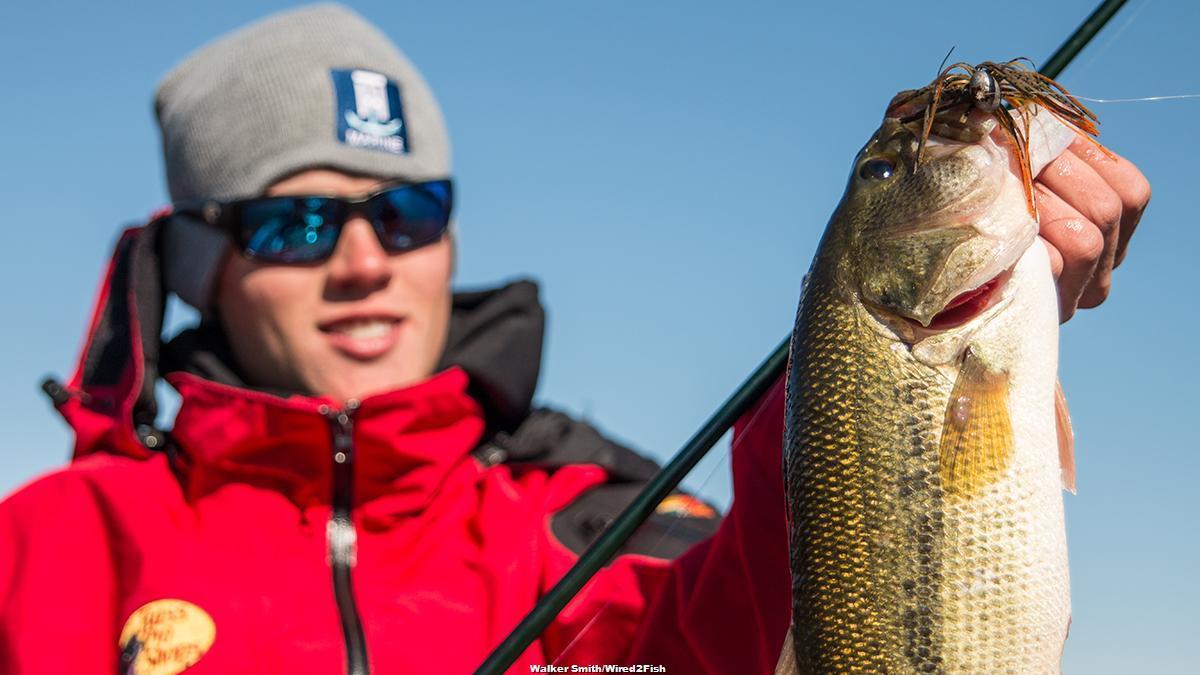




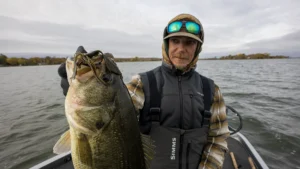


![[VIDEO] McClelland’s Top 7 Winter Bass Baits Explained](https://www.wired2fish.com/wp-content/uploads/2024/12/winter-bass-fishing-lures-300x169.webp)

